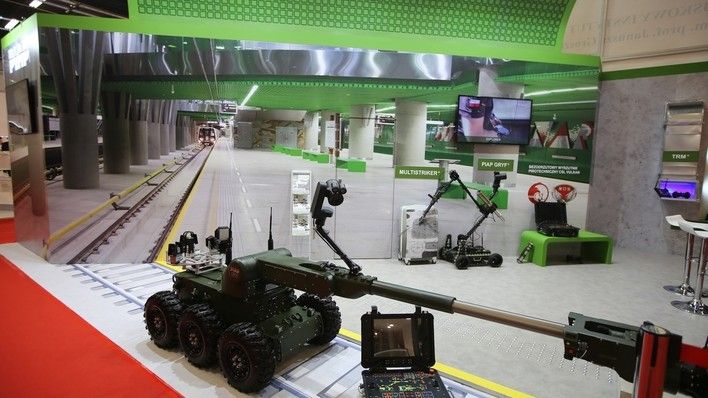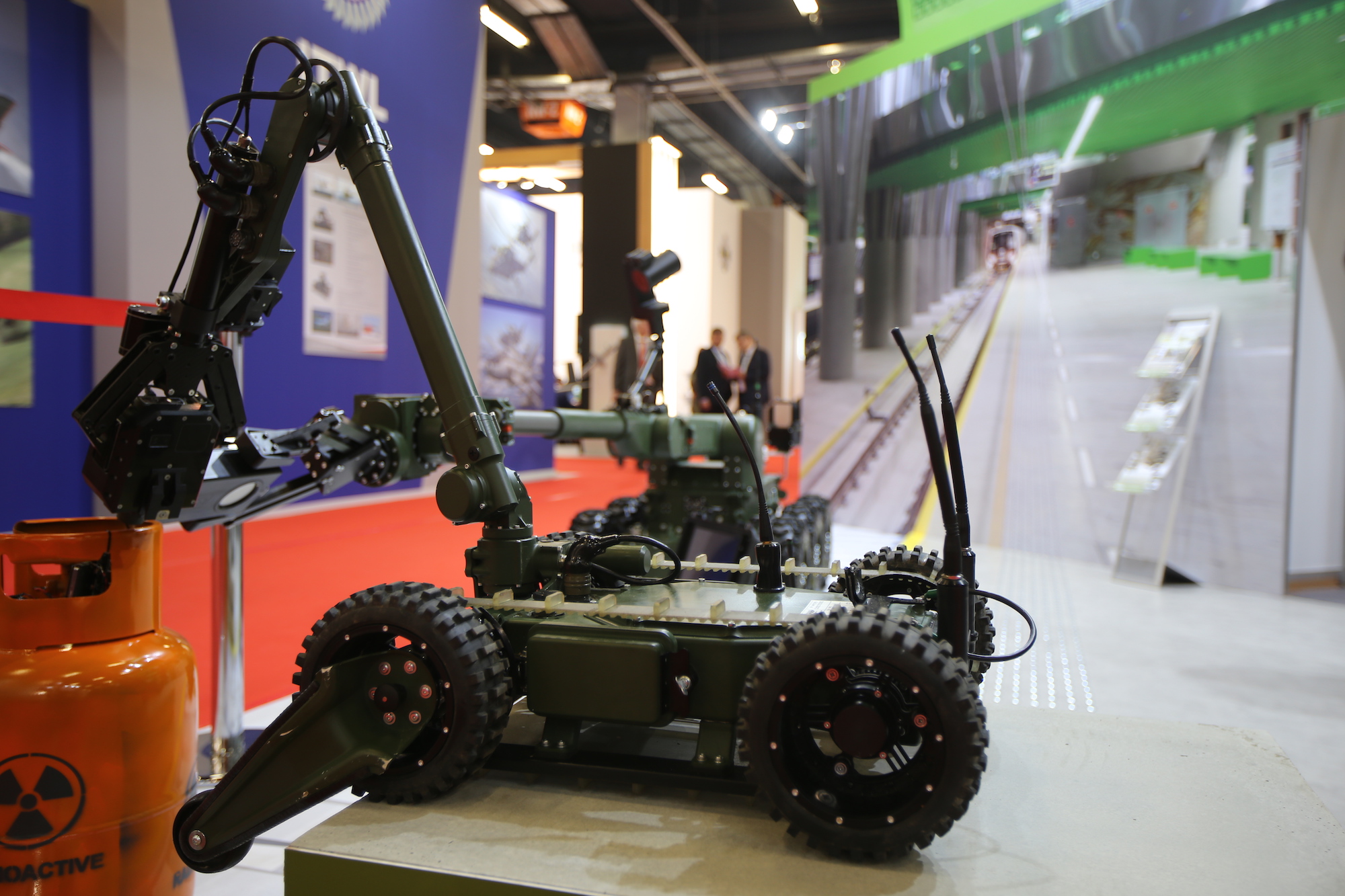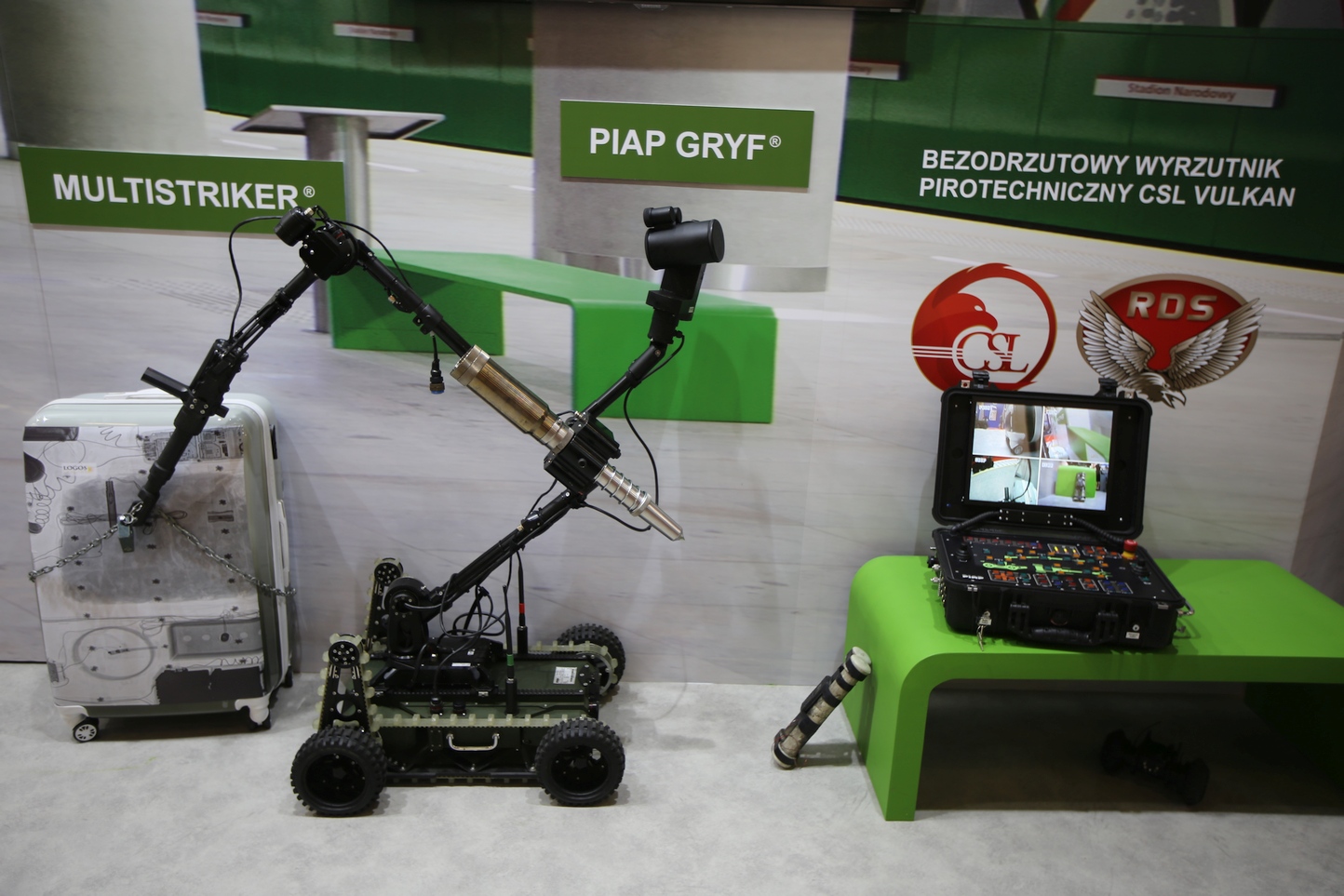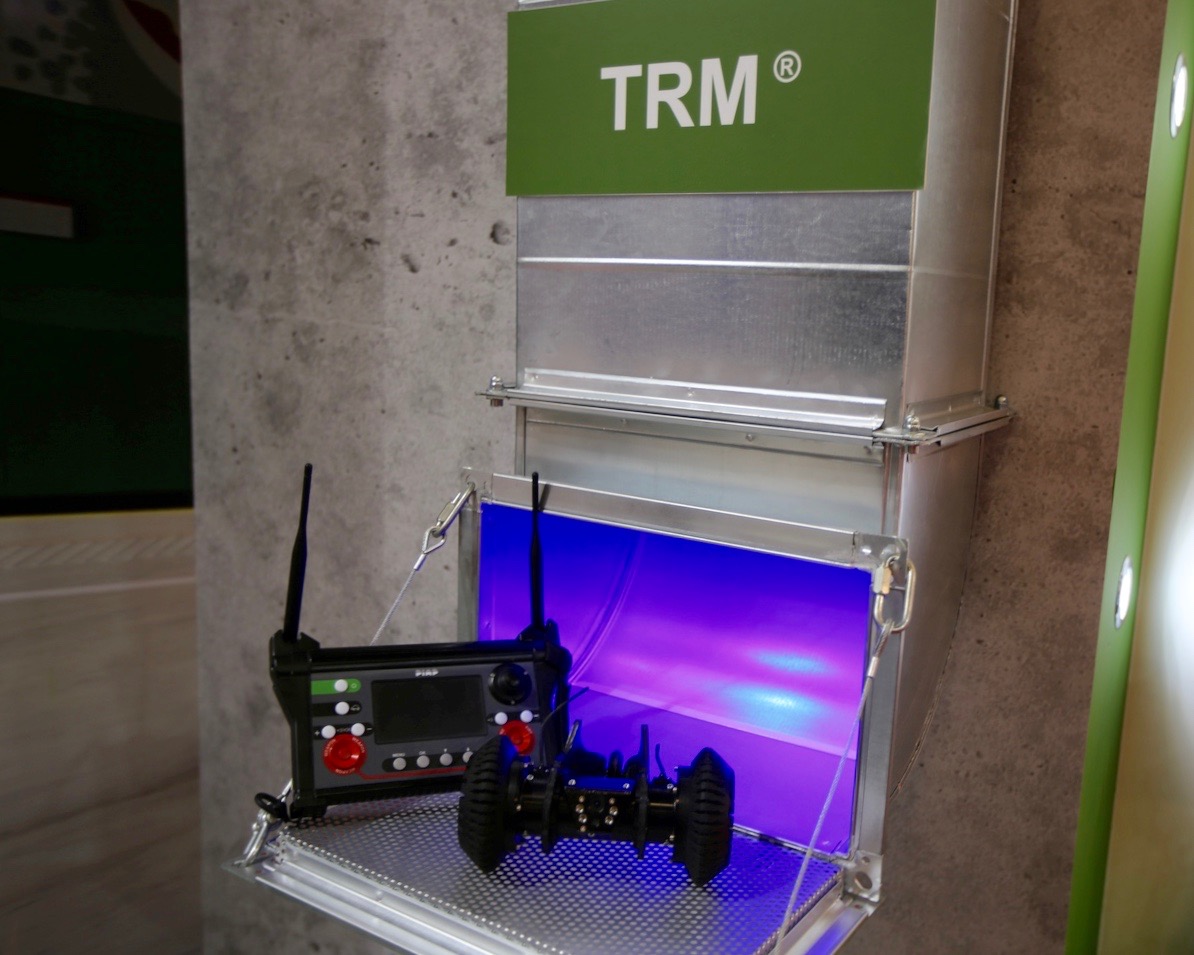Against Mines and CBRN. PIAP Robots Showcased at MSPO

When speaking of robots designed for C-IED missions and reconnaissance, the Industrial Research Institute for Automation and Measurements is one of the first Polish entities that come to one’s mind, along with its rich and well known offer within that scope. Since some time now, PIAP has also been associated with a selected range of CBRN accessories designed to act against the effects of using the weapons of mass destruction. The Institute showcases solutions within all of the aforesaid domains during this year’s edition of the MSPO event.
The Warsaw-based Industrial Research Institute for Automation and Measurements is a leading entity designing and manufacturing robots for carrying out specific tasks, typical for the uniformed services. Thus it is important for the Institute to continuously enhance the capabilities of the offered products. Furthermore, its job is also to create new solutions that could be applied in entirely new domains.
During the 26th MSPO exhibition PIAP made a strong appearance, yet again presenting a new product: the VULKAN disruptor. Counter-CRBN operations were the main theme of the entity’s stand. Considering the above, most of the robots have been fitted with a full range of accessories and detectors that can be used to remotely identify and measure the contamination levels.
A well known IBIS ® robot may be a good example here, as it was showcased in a new role with automatic CRBN contamination sampling capability, available via the tools container placed on the mobile platform.
Initially, the 6-wheeled mobile IBIS® platform with independent drive for each of the wheels, has been created to carry out EOD/IED missions and reconnaissance (the system allows for very rapid movement). The fluid control of the drives also allows for attaining a high degree of precision when it comes to the operations carried out. The robot, weighing more than 320 kilograms, may attain top speed of up to 10 kph. The remote control is ensured thanks to radio communications at distances of up to 1000 metres in open areas, with the transmission being secure thanks to special encoding.
The universal robot design, once extra systems are installed, may also be used to neutralize hazardous materials, carry out chemical reconnaissance or rescue operations. The CBRN accessory kit makes it possible to carry out the procedures as follows:
- Obtaining materials for laboratory analysis through swab sampling in the contaminated environment;
- Obtaining materials for analysis from surfaces of the objects;
- Obtaining ground samples;
- Detecting and measuring the α, β, γ and x radiation levels;
- Obtaining chemical particles from the air and liquids for the purposes of further lab work;
- Sampling and storing liquids;
- Displaying the contamination measurement results on a map.
Execution of the above tasks has been made possible thanks to the properly selected CBRN accessories, such as:
- Environmental swab used to acquire samples for laboratory analysis by swabbing the objects that could gather the unknown substances,
- Ground sampler for sampling the contaminated surfaces (ground, sand, ice, etc.), preventing the robot from getting contaminated,
- R-Sensor (EKO-C) for radiation detection and measurements, in case of which it is possible to control the radiometer and display the results via the console;
- SPME Adsorber used to acquire chemical particles from the air and liquids,
- Modular liquid samplers used to acquire and store liquid samples with the use a couple of types of sampling units.
Most of the modern solutions offered by PIAP, apart from using modern grippers, manipulators, GPS and INS sensors or visual control systems, may also feature hybrid drives, ultrasound sensors, X-ray scanners, a variety of other sensors (Bio-Vortex, weather station, C-sensor), scissors or disrupters. The accessory base is being, in an ongoing manner, developed, expanded and modified.
The Industrial Research Institute for Automation and Measurements also works together with a number of other research and industrial entities, tailoring the robots for specific purposes, such as autonomous mine detection and destruction. Furthermore, the PIAP Institute also organizes conferences or training sessions, within the scope of operating and maintaining the offered platforms, and within the framework of creating effective tactics, when it comes to using the robots.
This year the Institute, for the first time, showcases the English-made CSL disrupter. PIAP acts as the dealer in Poland and on the external markets. CSL VULKAN recoilless disruptor is a modular 5th generation unit that shoots rounds of variable weight. The system may be configured for neutralization of fuses and potentially explosive objects/detonators (IED, UXO and other threats), also as means of support for counter-terrorist operations. Optional grenade launcher breach attached to the 40 mm rifled barrel makes it possible to launch the M203 series grenades.
PIAP presented the following robots during the event:
- FENIX® - A light reconnaissance system that can also be used in inaccessible areas and in the areas at the frontline;
- GRYF® - Used to carry our reconnaissance in the areas that are hard to access and in the general terrain;
- TRM®, Tactical Thrown Robot.

FENIX® offers long operational endurance (up to 6 hours), ability to carry out 24 hours surveillance or a tracked-wheeled drivetrain with moveable front stabilizers. Perfect offroad capabilities enhanced thanks to the wheels-continuous track system with front stabilizers allow for easy movement along hardened and dirt roads, offroad and in the urbanized areas. Meanwhile, the small size and weight make it possible to transport the robot easily. When systems required for a specific mission are installed, one may use them to observe and monitor the given area of interest, pick up hazardous materials and neutralize them, transport sabotage equipment.
GRYF®, with the use of its manipulator with five degrees of freedom, also offering an option of tightly closing the gripping jaws, may carry objects with a mass of up to 15 kilograms. Perfect maneuverability and modular design can be listed among the most distinguishable features of this robot. Robot’s wheels may be removed, which makes the system smaller and facilitates carrying out operations in narrow spaces. Thanks to the utilized drive systems, the robot is able to go over obstacles and hills with slope of up to 45 degrees.

TRM® (made out of aluminium alloys) is a small device/robot, destined to carry out reconnaissance tasks in inaccessible or dangerous areas. It may be deployed inside the building or outdoors, to deliver optical or audio data remotely, to the operator staying at a safe distance. Thanks to a CANBUS connector, the robot may also carry motion or contamination sensors. It can hit the ground when dropped from a level of 9 meters (onto a hard surface), and maintain full usability. It may be used to carry flashbangs, smoke and tear gas grenades.

EXPLORER is an observation system for inspection of hardly accessible areas. It was also demonstrated during the MSPO event. It may be used by the uniformed services responsible for public safety, for instance to inspect car chassis, ventilation ducts, manholes, technical duct or other controlled and monitored locations. EXPLORER features a moving color digital camera with an autofocus, transmitting HD video and capable of capturing 5 megapixel stills. It features a remotely controlled cameras package (including an endoscope), display module, extra equipment and a telescopic beam, the operational length of which ranges from 1 to 1,85 metre. It is also possible to use a straight beam which may be up to 4,8 metres long, or angle-adjustable beams, with a length of up to 2,8 metres.
MULTISTRIKER® is a system that is used to support the EOD/IED teams, assault teams or engineering elements. The system in question is especially useful in circumstances where high-energy needs to be used in a short period of time to achieve the desired effect. The device uses the energy of a piston powered by powder.
UGCV systems, also referred to as Unmanned Land Platforms in Poland, have recently experienced acceleration, when it comes to their development. A lot of chatter can be heard, suggesting that there is a need to introduce more of such platforms into use. In some countries actions speak louder than words, and numerous advanced programmes were launched to expand the scale within such solutions are used.
The new generation robots could constitute one of the primary elements of the future battlefield, significantly enhancing the potential and capabilities of the land forces. The benefits are also going to be brought by mass use of such systems, as costs of maintenance, operational use and provision of proper potential would go down (savings emerging on the grounds of diminished storing, training, securing the operational use, payment and operational needs), and, above all, protection of lives and health of the soldiers, some of the tasks of whom may be taken over by the new hardware. Robots as such will be tailored to greater extent to cooperate/be equipped with new weapons or support systems. It would also be easier to adapt them to the dynamically evolving battlefield and protect such systems from a variety of threats.
If you need more information pertaining to the PIAP robots, feel free to visit the institute’s website, while numerous movie clips presenting the individual solutions are available via the company’s YouTube channel.
